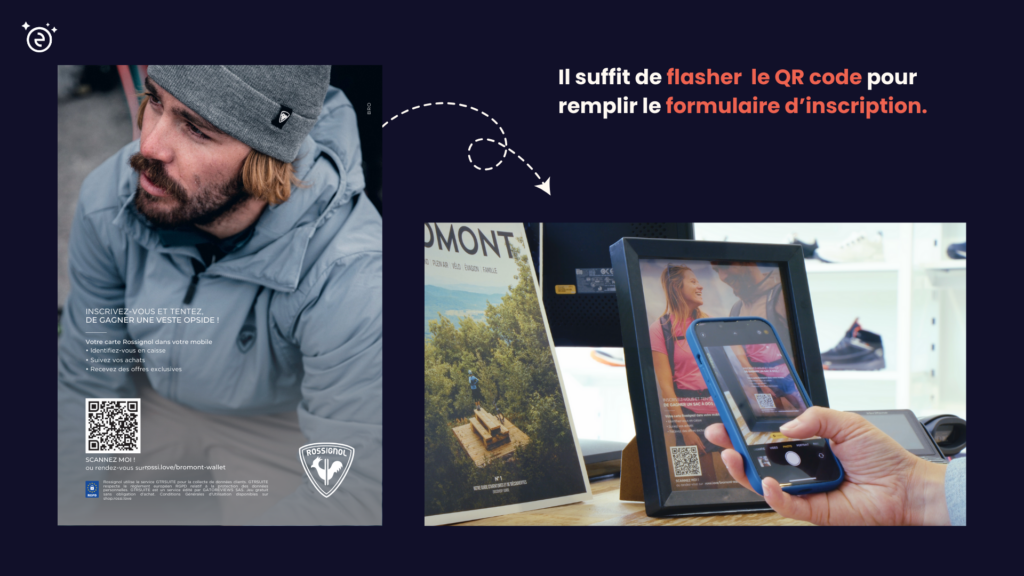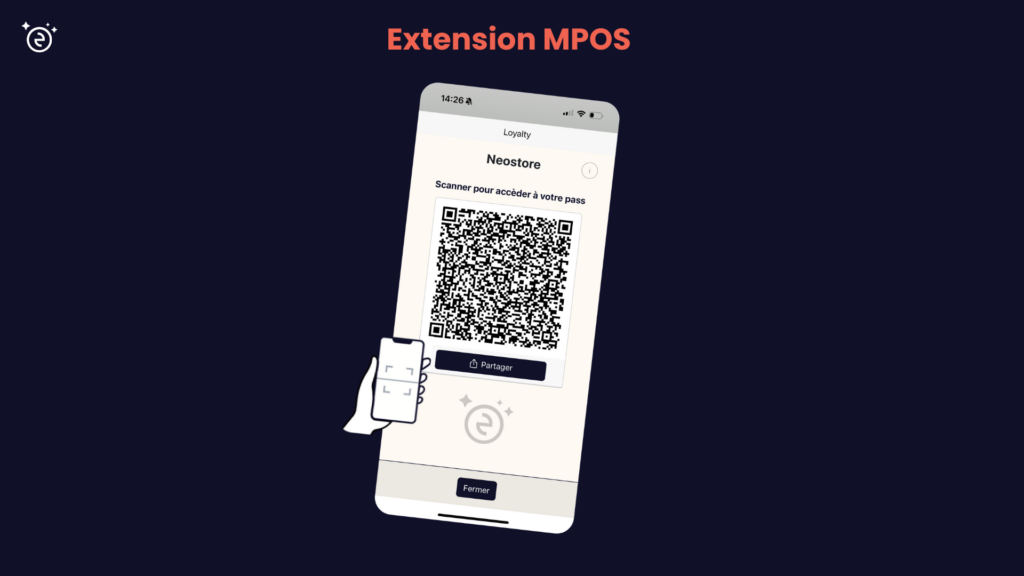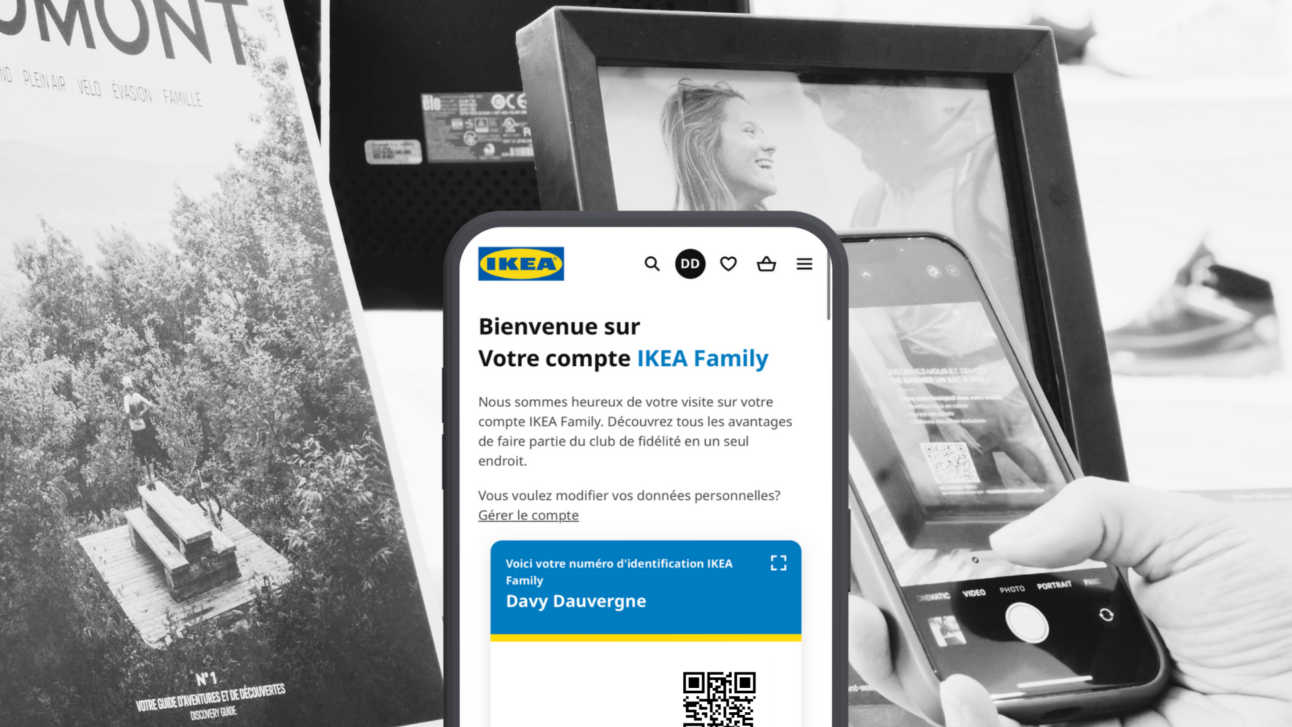The wallet is the new customer engagement medium par excellence for many brands. Its use has gradually shifted to marketing purposes, to the detriment of physical stores.
This article explores the importance of the retail network in the adoption of mobile wallets and the various strategies to implement. Happy reading!
The initial use of wallets
Initially, mobile wallets were designed to simplify the use of various types of passes in the physical world. Their main goal was to replace plastic and paper cards and tickets with digital versions accessible directly from a smartphone. Common uses include:
- Customer accounts
- Loyalty cards
- Coupons & Gift cards
- Event tickets
- Transport cards (e.g., Navigo Passes)
The diversion of wallets for marketing purposes
Many marketing companies quickly seized the opportunity offered by mobile wallets to launch digital campaigns. However, a major problem remains: these marketing initiatives focus almost exclusively on digital, neglecting the central role of the physical store.
Digital marketing campaigns, while powerful, can lose their effectiveness if not linked to a coherent physical experience. Consumers may even ignore these messages if there is no direct connection to their in-store shopping experience.
That’s why it’s crucial for companies to adopt a unified commerce approach by integrating physical stores into their digital strategy via mobile wallets!
The interest of the retail network in the adoption of wallets in stores
Physical stores play a central role in the adoption of mobile wallets. They are the direct point of contact with consumers. Thus, companies can offer real-time demonstrations, answer customer questions, and guide them through the installation and use of wallets in their shopping experience. Provided they build an effective strategy!
In-store enrollment strategies
By following a good strategy, companies can significantly increase the number of pass adoptions in wallets. For example, among customers who created an account in-store, 75% added their card to their wallet, according to the average retail adoption rate measured by Neostore in over 3500 points of sale.
This high conversion rate demonstrates the effectiveness of a well-thought-out customer enrollment strategy. Let’s examine the techniques to adopt under two main aspects:
Organizational aspects
Tools and supports needed for wallet integration in-store
The idea is to allow customers to easily identify themselves in-store. To do this, the use of unique QR codes allows customers to scan and quickly add their customer accounts to wallets. These codes can be placed at various strategic points in the store, such as the cash registers or directly on the sellers’ phones.
💡 Tip! Encourage your customers to scan the QR code with a reward system. For example: “Sign up and try to win a backpack! Your Rossignol card in your mobile:
- Identify yourself at the cash registers
- Track your purchases
- Receive exclusive offers”

Moreover, Neostore offers extensions for Mobile POS (Point of Sale) and Clienteling tools to facilitate customer enrollment in wallets directly in physical stores.
Thus, the enrollment process is simplified by minimizing the necessary steps: customers can easily scan a QR code or touch their phone to an NFC terminal to identify themselves at the cash register.

Training and involvement of sellers
We are witnessing a “change management” where sellers must evolve from a traditional role, which consisted of entering customer information and informing them about available benefits, to a more interactive role. Now, they assist customers on how to access their customer account at any time from their wallet.
Therefore, sellers must be able to demonstrate wallet features, answer customer questions, and guide them through the process of adding cards and their daily use.
It is also important to clearly define each person’s roles in the adoption strategy. For example, some staff members could be responsible for technical implementation, while others would focus on education and customer support.
By assigning specific roles and clarifying responsibilities, companies can improve their efficiency on the ground. This structured approach ensures team alignment on the goals to be achieved!
Operational aspects
Integration and identification at the cash register
Good integration of tools at the cash register is essential for effective customer identification. Cash register systems must be compatible with mobile wallet technologies to scan QR codes or detect devices via NFC. This integration ensures that customers can easily use their loyalty cards, vouchers, and other digital passes without complications.
👉 The Neostore cash register extension offers total connectivity by synchronizing in real time with your point of sale (Cegid, Shopify, New Store,…) and Marketing (Klaviyo, Salesforce,…) systems for smooth and effortless management.
Technological solutions
The use of advanced technologies plays a crucial role in improving the customer experience and operational efficiency. They facilitate the use of wallets and user identification in-store. Among these technologies:
iBeacon is commonly used in retail to send notifications to customers when they enter a store. Thanks to precise geolocation, customers receive personalized information such as:
- Promotional offers
- Product or service information
- Information related to the customer’s position
👉 For employees, iBeacon is very useful for being informed of customers’ arrivals, allowing for more personalized and responsive reception.
NFC (Near Field Communication) is a short-range wireless communication technology that allows data exchange between devices when they are close to each other (10 to 20 cm maximum).
👉 Mainly used in mobile payments, NFC technology is also used to digitize and manage store cards. For example, during an in-store purchase, just bring the phone close to the NFC-compatible payment terminal for the loyalty card to be recognized and applied.
Advantages for the customer in-store
Confidentiality and data security
One of the main advantages of using wallets in-store is the confidentiality and security of personal data. Your customers simply fill out an online registration form where they provide only the information they wish to share.
This means they no longer need to communicate their personal information out loud at the cash register. Additionally, their consent to the use of their data is collected directly upon registration.
In this way, cashiers only need to scan the customer’s card at the point of sale to identify them and apply the benefits and discounts. Your customers thus regain control of their personal data, which promotes a more secure and private shopping experience!
Simplification and security
In-store, customer identification is automated thanks to several features:
- Automatic card pre-opening: When a customer enters the store, the loyalty card or customer account automatically opens on their phone, ready to be used.
- Automatic attachment of customer files: Customer information is automatically linked to the specific store, without requiring manual intervention from the staff.
👉 Mobile wallets also help reduce fraud as each QR code generated for a customer is unique and cannot be assigned to multiple people.
Accessibility and autonomy
Contrary to the traditional idea that customer files are only accessible behind the counter, customers can now access their information at any time, such as their loyalty points, recent purchases, and exclusive offers, directly on their mobile device.
This immediate accessibility and autonomy allow customers to proactively manage their account without having to depend on store staff.
Conclusion
Mobile wallets have become an essential tool to improve the customer experience and enhance operational efficiency in the retail sector. Their use not only simplifies the storage of loyalty cards and other coupons in consumers’ smartphones but also allows them to regain control of their information.
Increasing the adoption rate of wallets in stores has become a major challenge for many brands. This is the whole point of placing the retail network at the heart of the adoption strategy!
With good integration of the necessary tools and comprehensive training of field teams, brands will be able to fully benefit from the advantages of mobile wallets in their commercial strategy.
